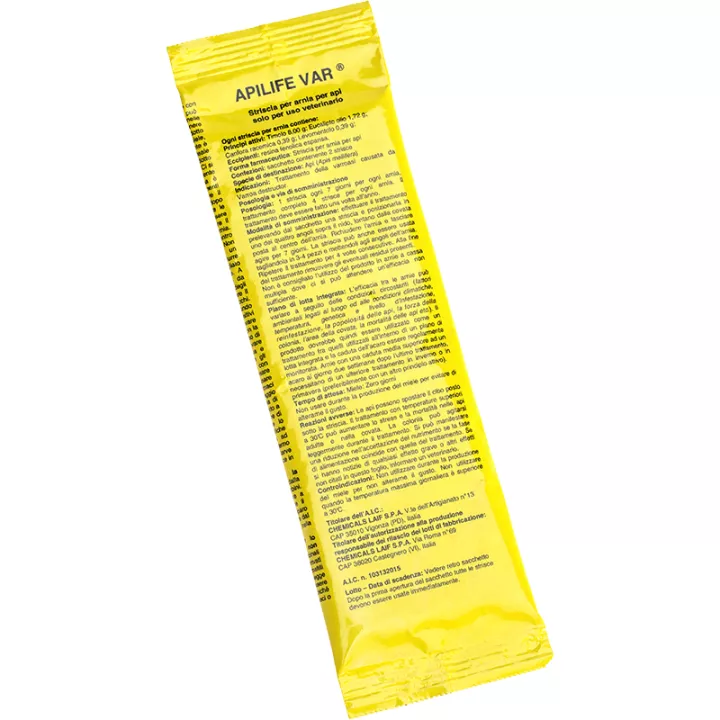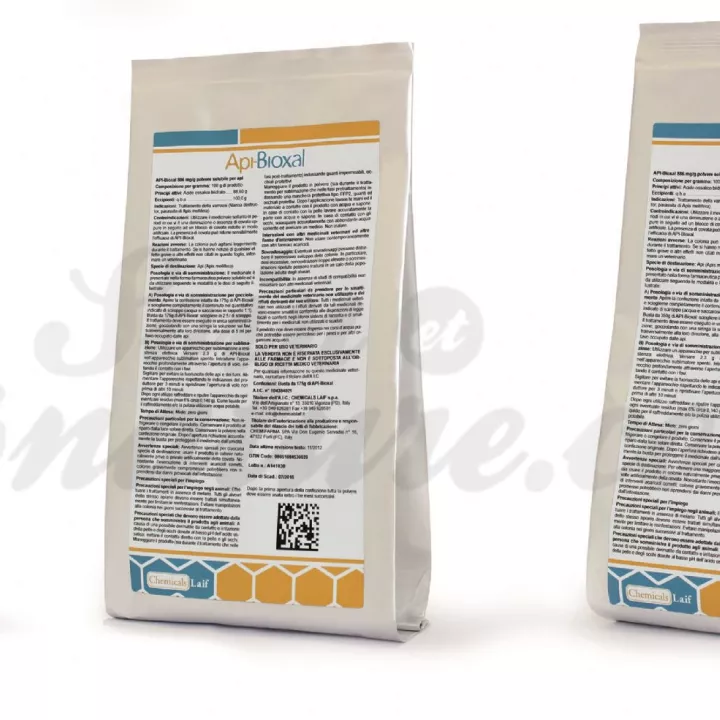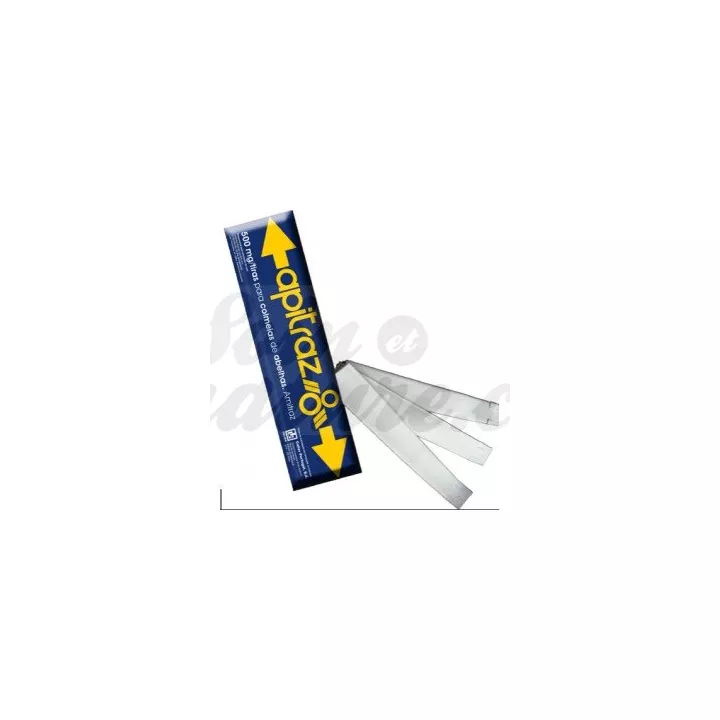What are Apivar strips in boxes of 10 used for?
Apivar strips in boxes of 10 for the treatment of varroa mites in bees.
Varroa mites are bees' number 1 enemy, proliferating en masse in hives. Controlling its spread has become essential for all honey producers. The effects of varroasis are devastating for bee colonies, as varroa destructor causes major losses of bees. Apivar lannieres are an effective way of treating hives against varroasis.
Amitraz acts on the varroa destructor parasite: Amitraz, a formamidine acaricide, acts as an octopamine receptor agonist. Chemical treatment with amitraz causes excessive stimulation of octopaminergic synapses in mites, leading to tremors, convulsions, detachment and death of the parasite.
Amitraz is released on the surface of the strips and acts through contact with bees. The pharmacokinetics of amitraz in bees are unknown.
Use two strips per hive (i.e. 1g of amitraz per hive).
- Separate the double strip.
- Push the pre-cut V-zone out of the strip.
- Insert each strip between two frames in the brood area or cluster of bees, with a minimum distance of 2 frames between strips. The strips should be positioned so that the bees can access both sides of the strip.
Alternatively, the strips can be hung through the hole above the pre-cut V, using a small nail (or toothpick or hook) attached to the frames.
In the absence of brood, or when brood levels are at their lowest, the strips can be removed after 6 weeks of treatment. If brood is present, leave the strips in place for 10 weeks and remove them at the end of the treatment.
If the strips are covered with propolis and/or wax, they can be gently scraped off mid-treatment using a frame lifter. The strips should then be placed back in the hive and repositioned, if necessary, so as to be in the brood area or cluster of bees (if their position has changed).
The recommended treatment period is in the absence of honey supers, after the last honeyflow (late summer/autumn) and before the spring honeyflows.
Infestation monitoring is recommended to determine the optimum treatment period.
When should Apivar bee strips be used?
- Parasite infections sensitive to amitraz.
- In bees: Treatment of varroasis caused by Varroa destructor.
Amitraz is a synthetic substance with acaricidal and insecticidal activity, belonging to the amidine family. Its mode of action is neurotoxic. Amitraz acts primarily as an inhibitor of octopaminergic receptors, leading to inhibition of physiological neurological impulses. The result is paralysis of the parasite, enabling its natural elimination by gravity alone.
We also offer Thymovar tablets at the best price in our online pharmacy.
How to use Apivar
Treatment in the hive:
1 g amitraz per hive, i.e. 2 strips per hive.
Separate the 2 strips and hang them between the frames at bee cluster level. Maintain a minimum spacing of one frame between the 2 strips.
Leave strips in place for at least 6 weeks.
Treat all hives simultaneously.
Recommended treatment periods: in the absence of beehives after the harvest (late summer/autumn) and before the spring honeyflow.
At the end of treatment, remove the strips from the hives and dispose of them in accordance with current waste disposal practices.
Dispensing: this medication can only be dispensed on presentation of a medical prescription at the pharmacy. Veterinary prescription required.
Available only from the pharmacy. Shipping prohibited.
Precautions for use of Apivar
- Do not eat, drink or smoke when handling the product.
- Wash hands after handling.
- Wear gloves and normal protective equipment when using this product.
- Do not inhale or swallow.
- Do not use during honey flow.
- Do not extract honey from the frames of the hive body.
- Do not harvest honey during the treatment period.
- Hive body frames should be replaced with new wax frames at least every three years. Do not recycle body frames for use as rising frames.
What is its composition?
A 15 g strip contains:
Active substance:
Amitraz ..... 500 mg
Excipient ..... 15 g (ethylene vinyl acetate copolymer strip)
Packaging
Box of 10 strips












